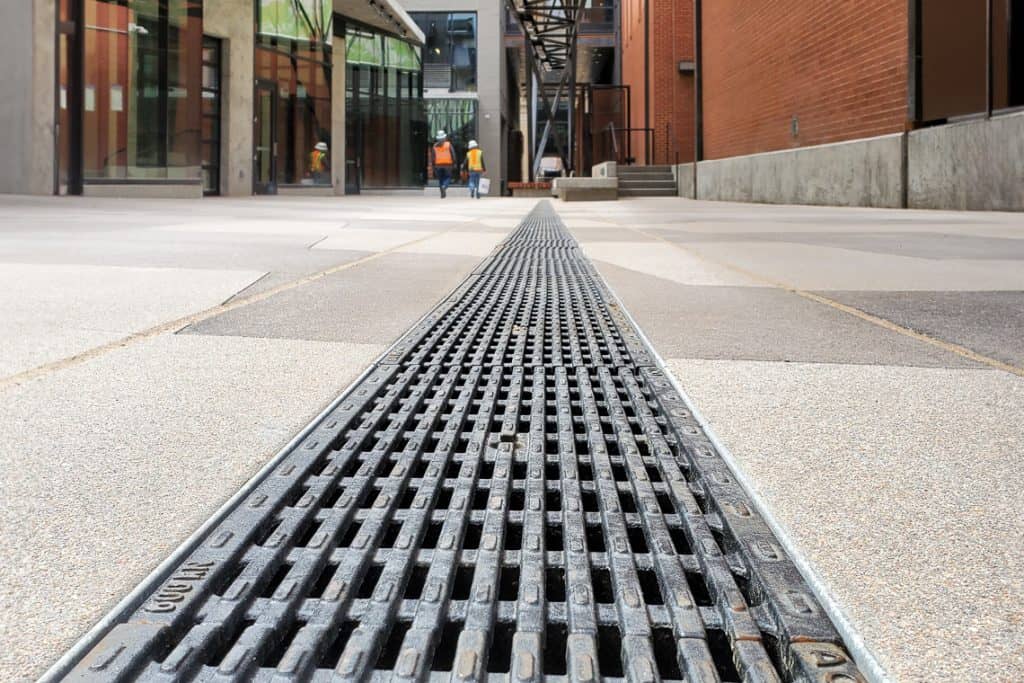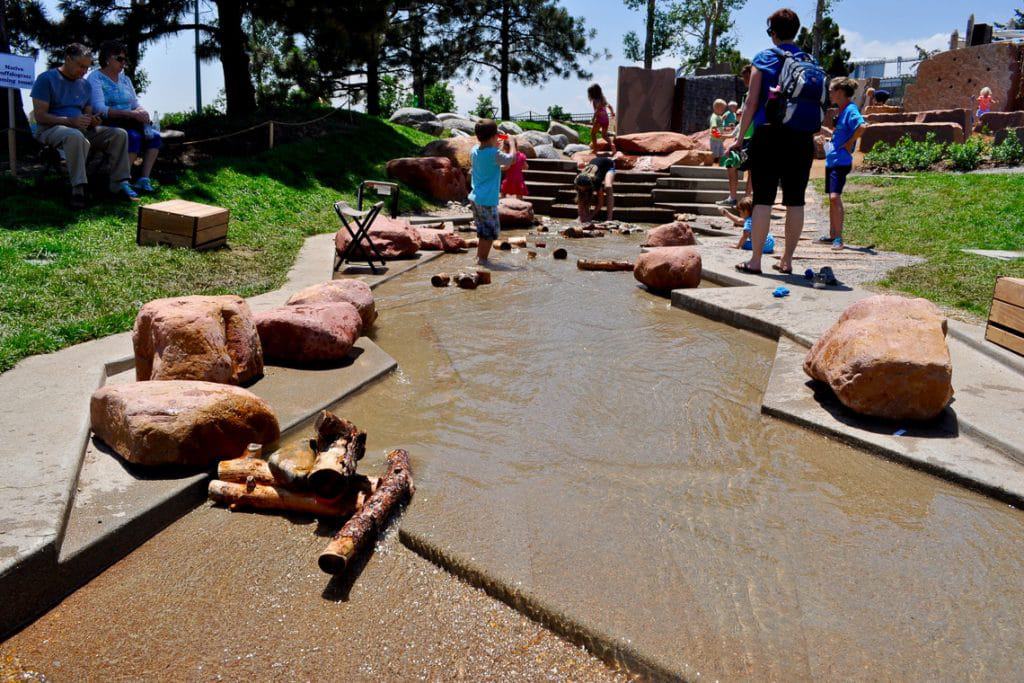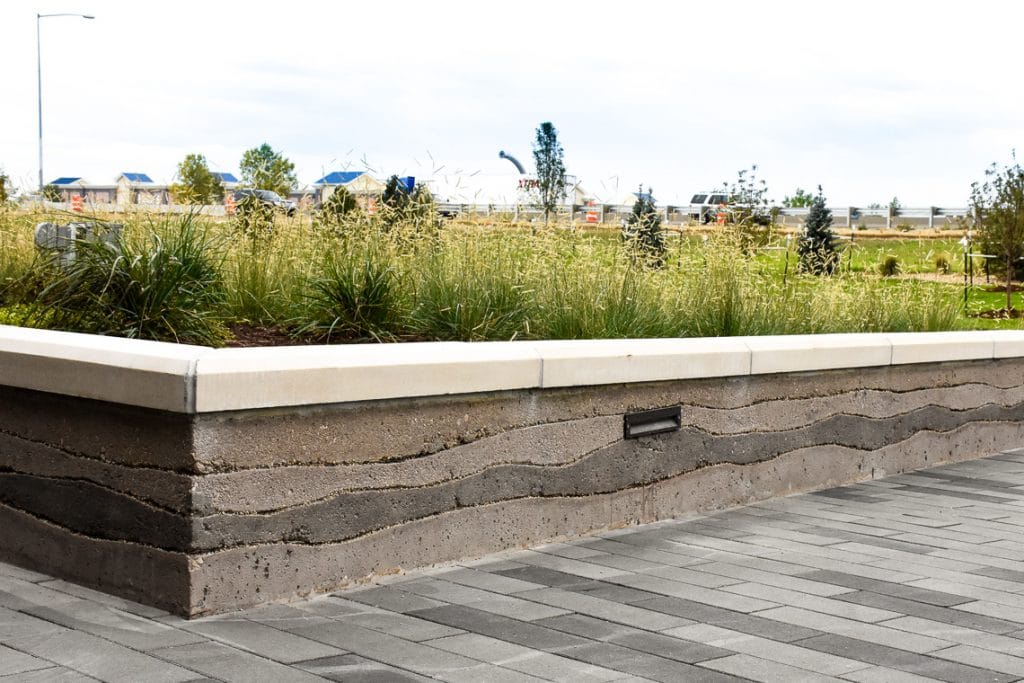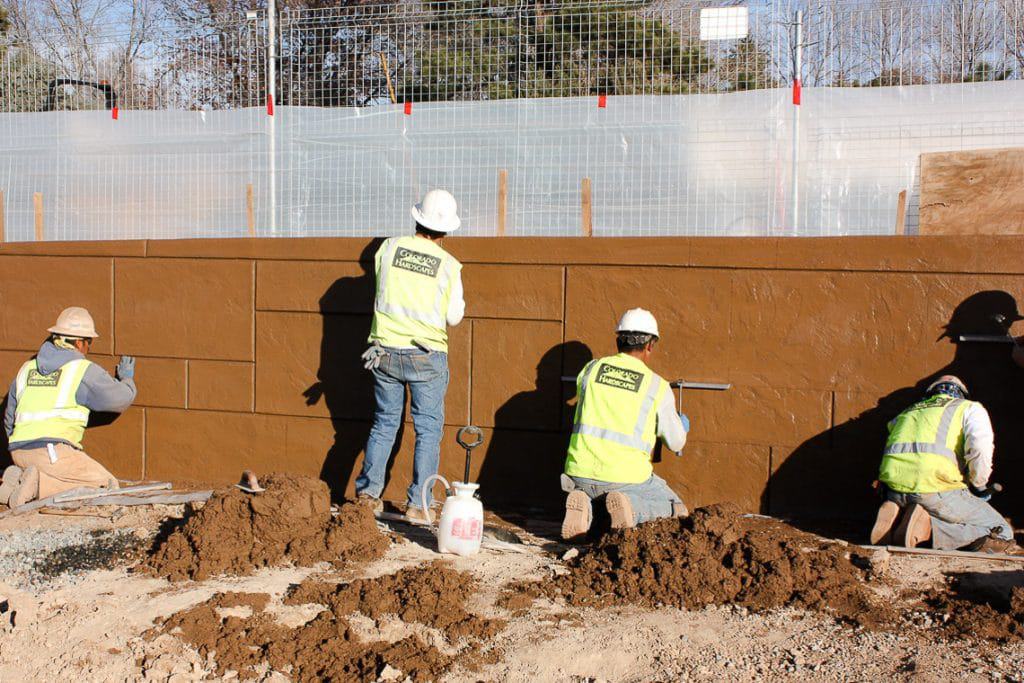At Colorado Hardscapes, we understand the importance of proper drainage systems in concrete construction. Drainage systems play a vital role in maintaining the structural integrity of concrete and preventing damage caused by water accumulation. With so many different drainage options available, it can be challenging to determine which one is best for your project. Fortunately, our team at Colorado Hardscapes has extensive experience installing each kind of drainage system.
Through our expertise, we have found that pricing, slope, and aesthetics are all important factors to consider when selecting the optimal drainage solution for your design. In this blog post, we’ll discuss each type of drainage system, its benefits, and drawbacks, and provide guidance for choosing the best option for your project to protect your concrete.

What Happens When Concrete Has Bad Drainage?
Without proper drainage, a variety of issues can arise on your project. For example, pooling water can cause freeze-thaw damage. Moreover, improperly drained surfaces increase the risk of icy or slippery spots and discoloration in concrete. In worst-case scenarios, incorrect drainage can also cause structural damage. To prevent these situations, let’s look at the different types of drainage systems you might choose for your project.
Different Types of Drainage Systems for Concrete
Before we dive in, please note that surface drainage is the ideal form of drainage. It is less invasive to the concrete and is most cost-effective. Surface drainage is when the slope of concrete directs water to a well-draining landscape area and into the overall stormwater drainage path. If surface drainage is not an option due to location, or other structural limitations, these are other, common drainage solutions.
Trench Drains:

Trench drains are a common choice for spaces with high water flow, such as courtyard plazas and pool decks surrounded by buildings. These drains consist of trenches that run through a paved surface with a removable grating or cover on top for easy access when in need of cleaning. Grates come in a variety of widths with the potential for decorative patterns. Colorado Hardscapes highly recommends trench drains for spaces with square and rectangular areas. This is because they capture water from two sloping planes and direct it to the trench. Although they may be one of the more expensive methods of drainage, their functionality and durability make them a wise investment to keep your space safe and dry.
Slot Drains:

Slot drains are similar to trench drains, with a narrow slot instead of a visible grate. This type of drainage is often used in residential settings, such as around swimming pools or patios. These are great options for those who don’t like the look of trench drains and want something more subtle. The price of slot drains may be higher due to the increased labor that goes into installing them but is a worthwhile investment if a hidden drainage system is your preference.
Area Drains:

Area drains are circular drains that are evenly spaced apart and connect to piping beneath the concrete. Although one of the more cost-effective options when it comes to drainage systems, they may not bring the aesthetic appeal you are looking for due to the sloped “bathtub” areas created around each drain.
Permeable Systems:
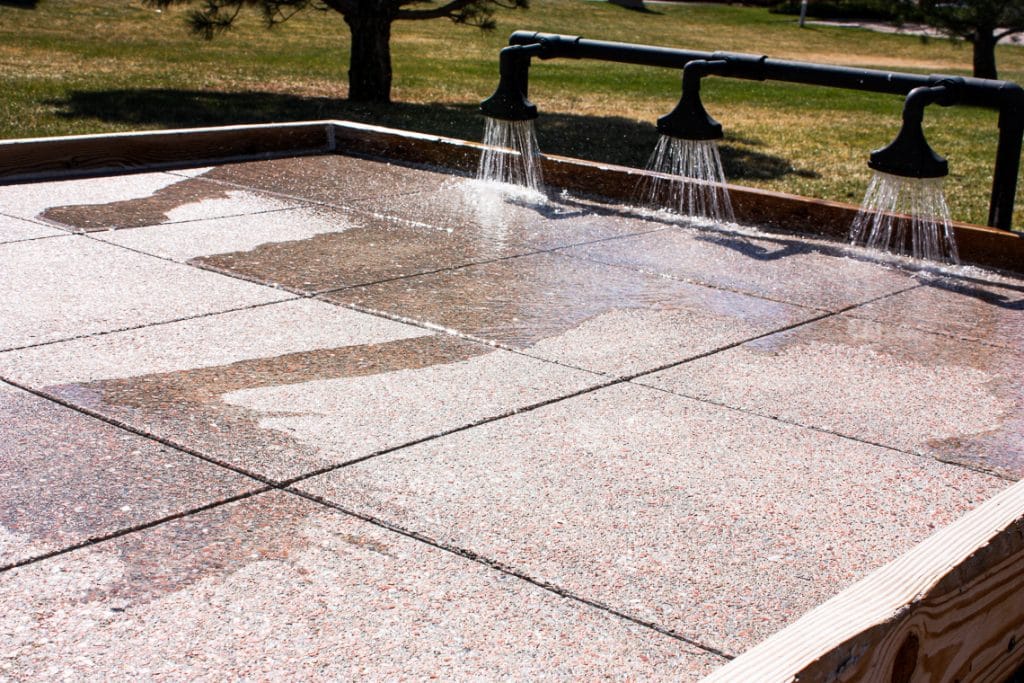
For environmentally-conscious projects, permeable systems may be the right choice. These systems are designed to allow water to pass through the surface layer and into a gravel or stone base layer below. Permeable concrete can help reduce the amount of runoff and improve water quality. Permeable paving is not a good choice if it allows water to go into the ground along building foundations as it may cause structural damage.
We have experience with all types of concrete drainage systems. Our team of experts can help you select the best system for your project based on factors such as the location, anticipated water flow, and aesthetic goals.
Installation Complications

At Colorado Hardscapes, we know that installing a proper drainage system for concrete is key to ensuring that it lasts for years without any issues. However, achieving the proper slope can be a technical challenge. With a minimum slope of 1% for correct drainage and a maximum slope of 2% for ADA compliance, the margin for error is narrow. This leaves us with tight specifications and limited options. To overcome these complications, we have developed several techniques over the years that allow us to nail the exact slope needed.
In anything, know this…

It’s not just a matter of choosing the right system, but also of planning and executing the installation with precision. We are committed to providing the highest quality installation of drainage systems that meet the specific needs of our clients. Contact us today to learn more about concrete drainage solutions and how we can help you achieve your goals.
Call us: (303)750-8200
Email us: [email protected]
